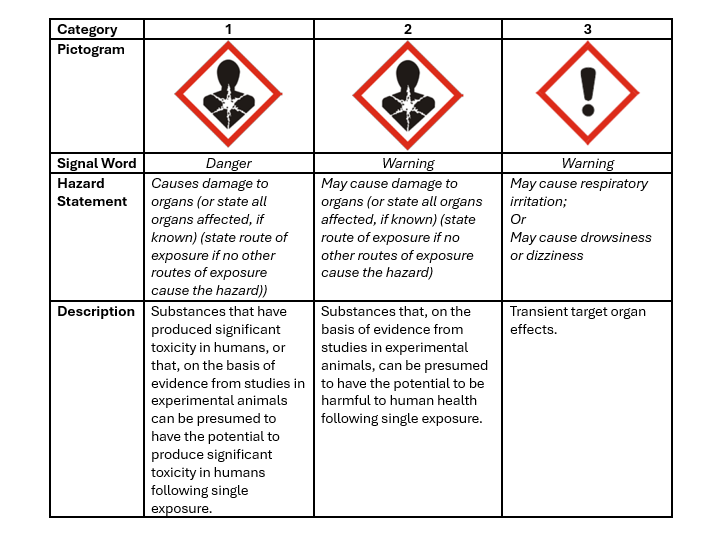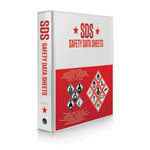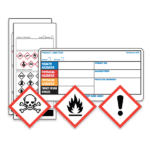
Specific Target Organ Toxicity – Single Exposure
When classifying a safety data sheet (SDS), there are several classifications to consider, from physical hazards to health hazards to environmental hazards. One group of hazards to consider is Specific Target Organ Toxicity (STOT), in other words this is a type of health hazard. These hazards are considered non-lethal effects on the organs or organ systems. However, they can impair organ functions whether it is reversible or irreversible with or without delay upon exposure. There are two types of STOTs: “Single Exposure,” and “Repeated exposure.” In this blog I will focus on single exposure (SE).
The classification is dependent on the weight of evidence based on human or animal exposure. This includes human incidents and toxicological studies. Examples for this classification can result from morbidity, changes to the respiratory, central, or peripheral nervous systems, including central nervous system depression and effects of special senses (e.g. sight, hearing, and sense of smell), significant organ damage, organ dysfunction, fibrosis, granuloma formation, and cell death in vital organs incapable of regeneration. All routes of exposure are considered such as swallowing, absorption through the skin, and by inhalation. These effects can be broken down into 3 categories. The table below summarizes the difference between each category and label elements that should be issued.
 Based on the above hazard statements for category 1 and category 2 from the table there are 2 elements from the statement to consider. The first is to evaluate the target organs and then you would need to identify the route of exposure. Secondary organ systems are not considered. For example, if a substance target organ causes damage to the liver, this could lead to damage to other organs or tissues. In this instance only the liver is considered the target organ.
Based on the above hazard statements for category 1 and category 2 from the table there are 2 elements from the statement to consider. The first is to evaluate the target organs and then you would need to identify the route of exposure. Secondary organ systems are not considered. For example, if a substance target organ causes damage to the liver, this could lead to damage to other organs or tissues. In this instance only the liver is considered the target organ.
It is important to understand the type of product you are handling. Health effects may not be obvious at first. To be aware of any potential health problems can protect you from present or future harm, and potential risks associated with the use and storage of hazardous products. A proper classification based on the correct studies can create awareness by minimizing or eliminating hazards through recommendations and guidelines for your product.
ICC Compliance Center has a team of full-time Regulatory Experts who have years of experience and are certified/recognized in their field of expertise. Contact us about authoring, reformatting, updating, and translating your SDSs. Ask us your tough questions by calling 888.442.9628 (USA) or 888.977.4834 (Canada).
Stay up to date and sign up for our newsletter!
We have all the products, services and training you need to ensure your staff is properly trained and informed.
 SDS Services SDS Services |
 GHS/OSHA/WHMIS Labels GHS/OSHA/WHMIS Labels |
 OSHA/WHMIS/GHS OSHA/WHMIS/GHSTraining Courses |





